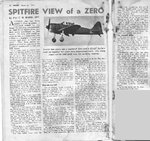Elvis
1st Sergeant
Not necessarily "smarter", but I do know a picture says 1000 words....Someone smarter than me will reply soon, but I thought I read somewhere the P40E Allison air intake was up high out of the worst dust? Wasn't the Spitfire air intake down lower where dust was worst?
Allison V-1710-39
Merlin V-1650-7
Hope that helps.
Elvis


